
Morganton is a city in and the county seat of Burke County, North Carolina, United States. The population was 16,918 at the 2010 census. Morganton is approximately 75 miles (121 km) northwest of Charlotte.
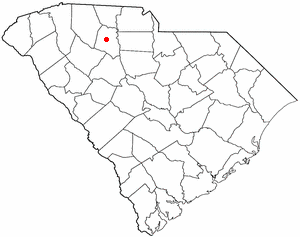
The city of Union is the county seat of Union County, South Carolina, United States. The population was 8,393 at the 2010 census. It is the principal city of the Union Micropolitan Statistical Area, which includes all of Union County and which is further included in the greater Greenville-Spartanburg-Anderson, South Carolina Combined Statistical Area.

William Dunlap Simpson was the 78th Governor of South Carolina from February 26, 1879, when the previous governor, Wade Hampton, resigned to take his seat in the U.S. Senate, until 1880. That year Simpson resigned to become Chief Justice of the South Carolina Supreme Court.

The North Carolina State Capitol is the former seat of the legislature of the U.S. state of North Carolina which housed all of the state's government until 1888. The Supreme Court and State Library moved into a separate building in 1888, and the General Assembly moved into the State Legislative Building in 1963. Today, the governor and his immediate staff occupy offices on the first floor of the Capitol.

Thomas Bothwell Jeter was the 79th Governor of South Carolina from September 1, 1880 to November 30, 1880. His home in Union, South Carolina is listed on the National Register of Historic Places.

Lemuel Boozer House, also known as the Boozer-Harmon House, is a historic home located in the town of Lexington in Lexington County, South Carolina. The home belonged to lawyer, politician, and judge Lemuel Boozer (1809-1870). It was built about 1828–1830 and is a one-story clapboard dwelling on a raised basement. It has a low-pitch gable roof and a tall basement of brick piers. A rear ell and wing were added in the 1840s. It was listed on the National Register of Historic Places in 1977. It is one of the oldest structures in the town of Lexington.
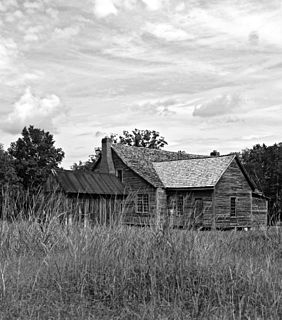
Bonham House, also known as Flat Grove, is a historic home located near Saluda, Saluda County, South Carolina. It was built about 1780, and is a two-story, log "dogtrot house." The house sits on fieldstone pillars. It was the boyhood home of Battle of the Alamo soldier James Bonham and his brother politician Milledge Luke Bonham, who served as governor of South Carolina during the American Civil War.

Marsh-Johnson House, also known as Robert Johnson House, is a historic home located near Saluda, Saluda County, South Carolina. It was built about 1817, and is a two-story, log farmhouse sheathed in weatherboard. The house sits on a brick foundation and has a one-story, shed-roofed porch. It is considered one of the earliest and intact log residences in South Carolina. The house rests on massive brick piers, which are laid in Flemish bond. A one-story, shed-roofed porch with wooden foundation piers and four rough hewn tree trunks supporting the roof spans the façade. Many of the windows retain their batten shutters.

Stevens–Dorn Farmstead, also known as the Peter M. Dorn Homeplace, is a historic home and farmstead located near Saluda, Saluda County, South Carolina. The house was built in three phases between 1880 and 1900, and is a one-story, rectangular, frame dwelling. The house consists of 1 1/2 rooms, with three major front doors and one minor front door. Also on the property are a contributing woodshed/buggy house, smokehouse, corn crib, and barn, all built about 1880; and three brooder houses dated to about 1945.

Caldwell–Hampton–Boylston House is a historic home located at Columbia, South Carolina. It was built between 1820 and 1830, and is a three-story, five bay, clapboard clad frame dwelling in the Greek Revival style. It features a two-story, projecting front porch. Also on the property is contributing ironwork and brick fencing, and a stable/carriage house, garden gazebo, and tea house. In 1874–1876, it was the residence of South Carolina Reconstruction governor Daniel H. Chamberlain, who purchased the house in 1869.

Horry-Guignard House is a historic home located at Columbia, South Carolina. It was built before 1813, and is a two-story, late Federal style, modified I-house type frame dwelling. The front facade features a one-story, full-width balustraded porch supported by square columns. During the winter of 1813–1814, the main hall was widened from six feet to eleven feet. To do this, the house was sawed in half and the two ends were pulled apart to rest on two new foundations. It was probably built by Peter Horry (1747-1815), a Revolutionary War Colonel and Brigadier General of the South Carolina Militia. Later, the house was acquired by John Gabriel Guignard (1751-1822), the Surveyor General of South Carolina from 1798 to 1802. Guignard is responsible for the early design of the city and laid out the first streets of Columbia.

McMakin's Tavern, also known as the Morgan-Stewart House, is a historic stagecoach stop and plantation home located near Lyman, Spartanburg County, South Carolina. It was built about 1790, and is a two-story, clapboard single house with gable end chimneys. It features a one-story, full width veranda supported by square columns. The interior features elaborately carved woodwork in the Adam style. The house operated as a stagecoach stop in the early-19th century.
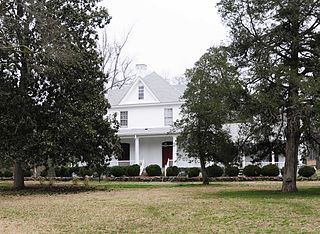
Golightly-Dean House is a historic home located near Spartanburg, Spartanburg County, South Carolina. The oldest section dates before 1784. It is the one-story, double-pen, masonry wing. About 1830, the two-story, brick portion of the house was added. Following an 1884 tornado, further modifications were made to the dwelling. Located on the property are a contributing log smokehouse and a log shed.

Woodland Plantation is a historic plantation house and farm complex located near Carlisle, Union County, South Carolina, United States. It was built about 1850, and is a two-story, Greek Revival style clapboard structure. It features a front porch with square columns that have windows on all four sides. The complex includes buildings dating from 1850 to about 1950. They include a storehouse, a smokehouse, a carriage house, a bull pen, a cotton gin house, a privy, a hay barn, a calf barn, an office, a dairy milking parlor, and a silo.

Cross Keys House is a historic plantation house located at Cross Keys, Union County, South Carolina. It was built about 1812–1814, and is a two-story, five bay, brick Georgian Colonial style dwelling. It features a gabled roof with identical pairs of end chimneys, a massive raised first-story portico, and date stones carved with the date of the house's completion (1814), original owner's initials (B.B.), and crossed keys thought to be the insignia of the builder.
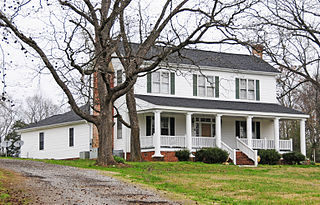
Cedar Bluff, also known as the Byrd Murphy House, is a historic home located near Union, Union County, South Carolina. It was built about 1790, and is a small, two-story, timber frame I-house. It features a one-story shed porch supported by square plank columns. A rear wing was added to the house after 1900.
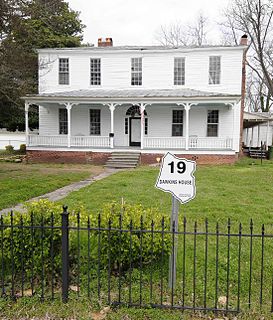
Judge Thomas Dawkins House, also known as The Shrubs, is a historic home located at Union, Union County, South Carolina. It was built about 1845, and is a two-story clapboard dwelling with a hipped metal roof. The front facade features a five-bay wide verandah supported by six chamfered columns. It was the residence of Judge Thomas Dawkins, a well-known political leader in Union County during and after the American Civil War.
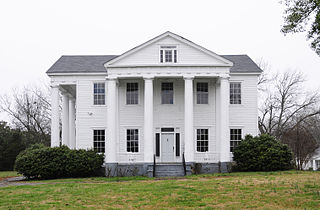
Meng House, also known as The Hill House and Clough-Wallace House, is a historic home located at Union in Union County, South Carolina, United States. It was built about 1832, and is a two-story, Greek Revival style frame dwelling. It features two two-story Doric order porticos supported by four stucco-over-brick columns. It has a two-story wing that houses the kitchen with bathrooms above.

Merridun is a historic home located at Union, Union County, South Carolina. It was built about 1855, and is a two-story, Georgian style frame dwelling. It features a massive two-storied Neoclassical portico with Corinthian order columns. It shelters a one-story verandah that extends partially around both sides of the house.

Wilson House, also known as Old Jail and Yorkville Jail, is a historic home located at York, York County, South Carolina. It is attributed to Robert Mills and was built in 1828. It is a three-story, brick building originally designed as a local jail. It features brick arches and a semi-circular fanlight. It was converted into a residence in 1853, then used as a jail during the Reconstruction Era when Federal troops imprisoned Ku Klux Klan members.























